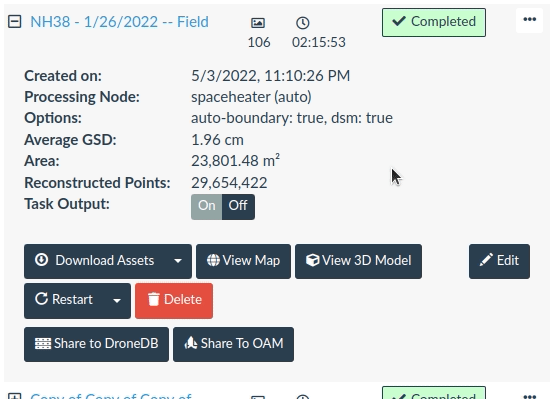Flattening the world: faster processing with planar reconstruction

A few weeks back, I had the pleasure of visiting with Piero Toffanin in Florida and had 4 days of eating, talking, and drinking espresso. OpenDroneMap was much of the conversation, but we wandered a lot conversationally, caught up a lot, and had a great time. We even found some time to fly drones. (Random sidebar, Piero’s better half, Danielle, is a delight too). At the time, Piero was working on an interesting problem: planar reconstruction. Planar reconstruction is an interesting alternative to what we typically do in OpenDroneMap. If you’ve been using OpenDroneMap for even a short time, you’ll notice it does a lot of work: it’s a full photogrammetric workflow, so it creates a detailed point cloud, mesh, and elevation models too, if you ask for them. The detailed point cloud and mesh aren’t really optional.

By contrast, planar reconstruction performs the minimum needed to integrate a consistent enough solution (for flatish things, anyway).
Every few weeks or months, someone shows up on the forums begging for something faster and less resource hungry for their simpler use case, or else they compare the full work OpenDroneMap completes to much faster, but less complete workflows from a particular proprietary tool (you know the one… it rhymes with “fix a tree, shield)”. If you are one of those users (or just begged silently in the comfort of your own head), well this is your day: we now have an implementation of planar reconstruction. When I was visiting, Piero was puzzling over how best to implement a solution of planar reconstruction that is highly parallel but also memory efficient. He must have gotten there, because a few days ago, he closed pull request 1452.
So how does it work and how does it look? Initial test indicate that it is much faster. Depending on your machine and dataset, you might see 4-6 times faster. And the results for flat areas are quite suitable. I’m even pleased with trees (from an appropriate high-enough height, anyway).


There will be artifacts. That is the trade-off. But, if it’s an acceptable trade-off, if you need a good-enough solution fast, this might be the setting for you:
